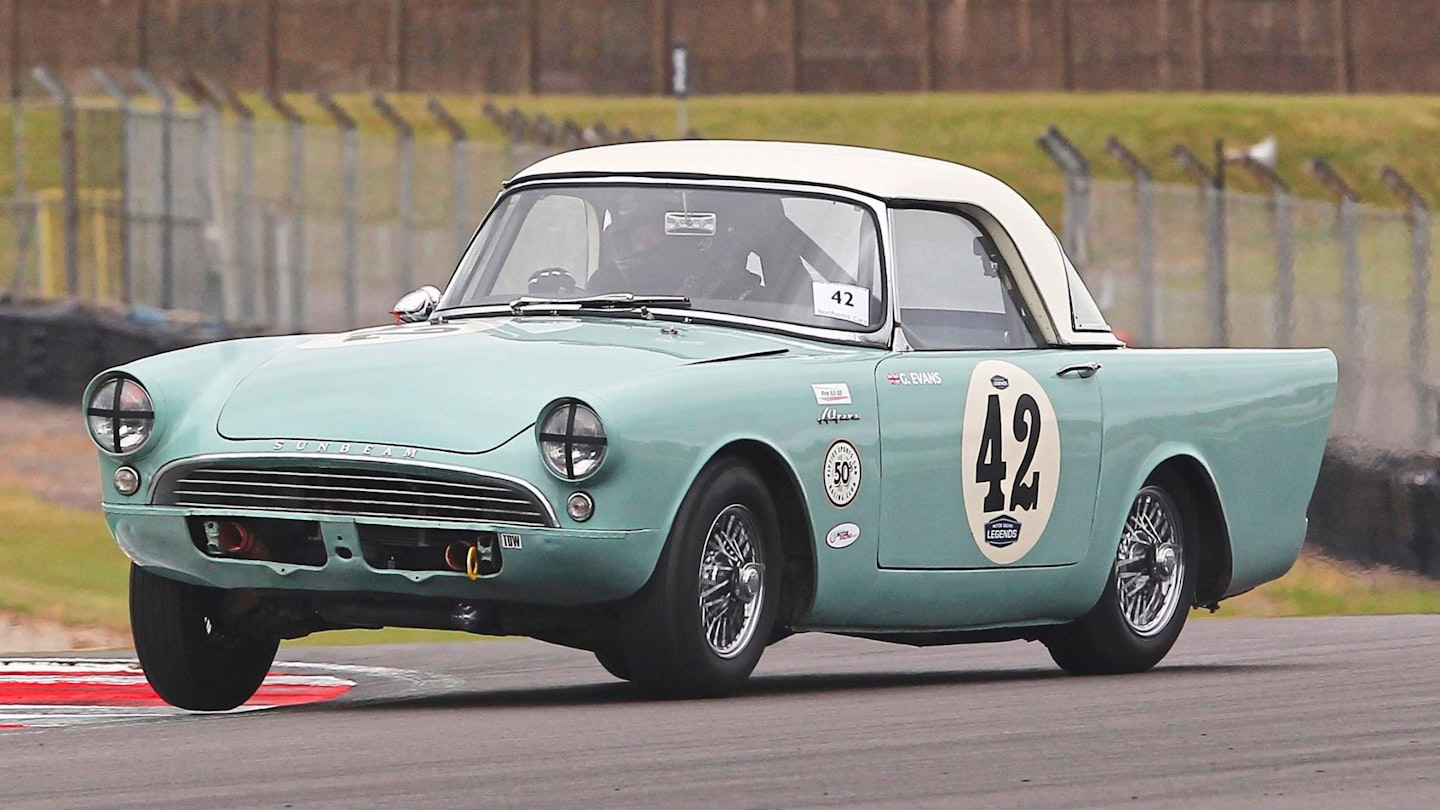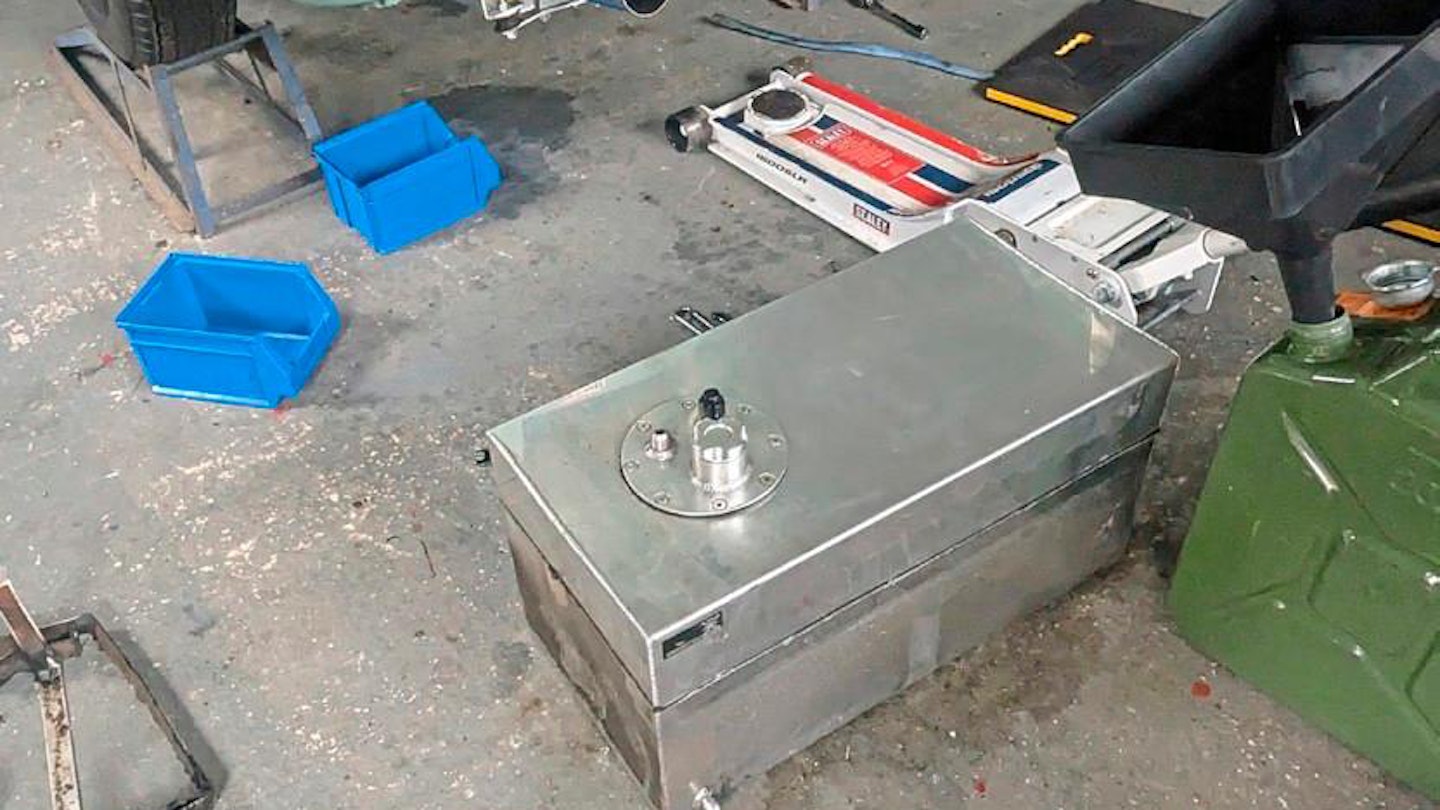[ OUR CARS ] 1961 Sunbeam Alpine Series 2

Three-wheeling shows chassis is dialled in, and explains worn tyres (image credit: Mick Walker)
Owned by Gareth Evans (gareth.evans@bauermedia.co.uk)
Time owned One year, six months
Latest/total miles 80/45,192
Latest/total costs £960/£19,601
Previously New windscreen, inlet manifold
You’ve not heard from me in a while. I was planning to write an update after the Vintage Sports-Car Club (VSCC) Donington event in May, but that event was abandoned following the tragic death of renowned pre-war racer and enthusiast Julian Grimwade during the first race of the meeting. May he rest in peace.
It wasn’t until a week or so later that I noticed a strong smell of fuel and drips of BP Ultimate on the bottom of the Sunbeam’s fuel tank, but it wasn’t awfully clear where they were coming from. Alarmingly, the entire 15 litres I’d put in – for the race that ultimately wasn’t to be – had leaked onto my workshop floor and evaporated in the summer heat.
I tried PTFE tape on all the AN-6 connections from the fuel take-off to the pumps, but this didn’t get it. As a last resort with only a week until my next event at Thruxton Retro, I got the spanners out again, jacked the car up and removed the tank itself so I could put it on paper and isolate the leak.
It didn’t take very long at all to see that one of the aluminium welds had failed. There was a crack along the bottom edge that wasn’t visible to the naked eye, but fuel had definitely made its way through onto the paper below.
At this point I was running out of options. The tank is a specific size and shape to fit into the hole in my car – it’s a 40-litre racing fuel cell that is filled with foam and a replacement wasn’t going to be very easy to come by. My only solution was to try to get some tank sealant and hope it didn’t worsen as I drove around the UK’s fastest circuit.

Fuel tank had to come out to diagnose leak
Thruxton arrived and the sun was shining. The tank weld appeared to be holding together as I prepared the car for qualifying, and indeed the 10 litres I put in there got me to the end of the 20-minute practice session as expected.
But unfortunately that wasn’t the end of my fuel system woes. A quick check under the bonnet showed that I’d lost the jet inspection cover from one of the car’s Weber carburettors, which had then thrown a fair amount of fuel all over the underside of the Sunbeam’s bonnet.
That wasn’t all that had disappeared, though – the wing nut was gone and critically, and more worryingly, the spacer underneath had also departed. This unusual part was vital. My Webers are a Holbay design, so don’t have a vent in the front like nearly all other DCOEs. All this mean that you can’t just put a cap back on if you want the carburettors to work. So I had to improvise a solution that involved using heat-resistant aluminium tape with holes punched in it.
After all these unexpected events, I had a pretty enjoyable race in the end, finishing eighth. This is my best result to date in the ultra-friendly but competitive Fiscar series. Somehow all the faulty elements of the fuel system held together. Next month’s going to be expensive, though… a new tank will be needed, and my tyres have seen better days too!
Subscribe to Classic Cars today. Choose a Print+ Subscription and you'll get instant digital access and so much more. PLUS FREE UK delivery.
